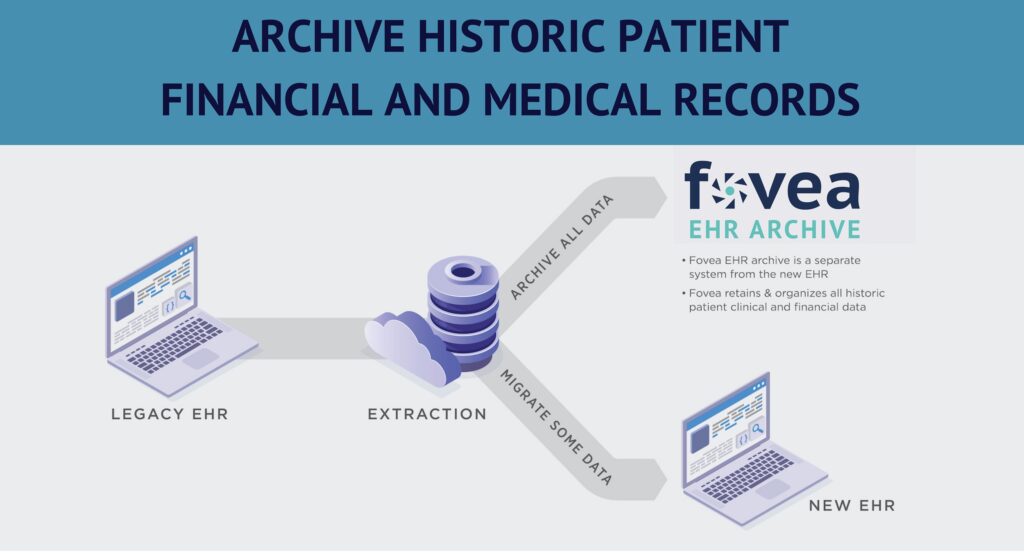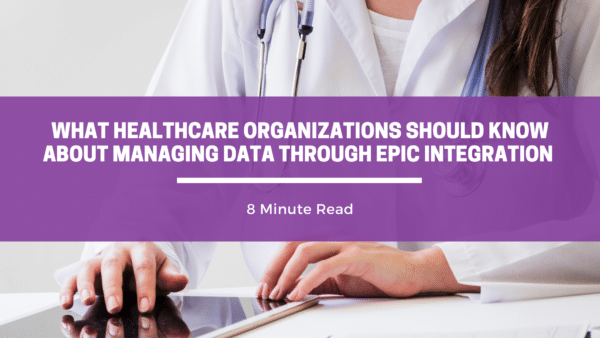Epic has become the most extensively used electronic health record (EHR) in the United States, since its first software design in 1979. According to PubMed Central®, Epic is the most prevalent EHR available in the US and maintains the health records of approximately half the US population.
Epic states that currently more than 300 million patients from academic medical centers, children’s organizations, community hospitals, hospices, independent practices, mental health, multi-specialty groups, payers, rehab centers, retail clinics, and many other healthcare organizations, have a current electronic patient record in Epic systems. The company is said to be one of the top vendors for inpatient and ambulatory electronic health record systems in America.
Epic is one of the prominent market leaders, that holds up to 58% of the market share alone and 85% of the market share with Cerner. As of today, Epic has received the number one spot from KLAS Research for overall software suite rankings every year since 2010, and is one of the fastest-growing EHR among hospitals.
Is your healthcare facility planning to move to Epic as its new EHR, but is unsure of how to manage its healthcare data effectively using integration, during the transition?
In this blog, we’ll cover:
- Epic Interoperability
- Integrating Your Healthcare Data With Epic
- Integrating Epic With An Archival Solution
- Integrating Epic With Fovea EHR Archive®
Epic Interoperability
Epic is known to be one of the most interoperable EHRs in the market due to its excellent support of secure flow of patient data between Epic and other systems, supporting a large type of industry-standard exchanges. The deep interoperability of Epic systems is attested by the 2020 KLAS Report.
As of today, Epic supports HL7, CDA, ASC X12, DICOM, NCPDP, IHE, Web services, and other APIs. The Fast Health Interoperability Resources (FHIR) from HL7 is currently a widely recognized standard for EHR integration. Epic also supports the HL7 SMART on FHIR profile of OAuth 2.0, including the EHR launch and standalone launch for both patients and providers, and provides an option for basic authentication as well. Hundreds of Epic sites have implemented SMART on FHIR.
Transitioning EHR Data To Epic Solution
When transitioning to Epic, many healthcare organizations plan to migrate their data from multiple old systems directly into Epic. Often, organizations assume that ‘all’ of their data can be moved to the new EHR. However, this is a false assumption, as it ignores the challenges pertaining to legacy data. Even the most complete data conversion process would not migrate ‘all’ data and leave some of the data behind, especially from displaced applications. Typically, Epic will permit up to a certain amount of data to be migrated into the new EHR.
As you consider best practice, the challenges that come with data migration include:
- Data gravity and silos
- Data complexity
- Data incompatibility
- Incomplete or Inconsistent data
- Others
Data Migration due to such challenges may lead to the retention of some historical data in the legacy systems, as not all the data formats would be directly compatible with the new system. Additionally, the legacy systems would need to be kept as the historical data would need to be retained and stored as per federal and state-mandated retention requirements, which would incur additional costs for the healthcare facility.
Related: https://triyam.com/articles/understanding-ehr-data-retention-requirements-for-your-state
The legacy systems retained by the organizations would then act as vulnerabilities due to old technology, which could in turn cause a data breach.
As a solution to such challenges, it would be a best practice for your organization to consider migrating some data to Epic, archiving the remaining healthcare legacy data into a centralized archival solution. For optimal workflow, integrate the Epic system that has current data with the archival solution for real-time access to both – current operational and historical healthcare data. This will allow the decommissioning of legacy systems and would save historical application, maintenance and support costs.
- Triyam provides data extraction, conversion, migration, and archival services
Integrating Epic With An Archival Solution
For a seamless transition to Epic, and to overcome the associated challenges of data migration, the organization must archive their healthcare legacy data in an active archive and integrate it with Epic using Single-Sign On (SSO).
- Move legacy data from multiple systems to one consolidated archive after data cleansing and mapping
- Archive any type of data, as an archive should be application agnostic
- Decommission legacy systems, remove application(s), maintenance and support costs, and save money
- Increase Return on Investment
- Meet mandated state and federal retention laws
- Improve data security and patient data safety
- Enhance legacy data accessibility and productivity for users
- Integrate archive with Epic for access to current operational data
- Improve the Release of Information workflow
- Improve care coordination
- Generate standard and custom reports
- Improve patient care and population health using analytics
- Decrease unnecessary tests
- Decrease physician burnout and improve operational workflow
Related: https://triyam.com/articles/a-guide-to-healthcare-data-archiving-solutions-basics-and-best-practices
Triyam helps healthcare organizations migrate some data to Epic and archive their legacy data into its excellent interoperable, cloud-based archive – Fovea EHR Archive®, thereby decommissioning legacy systems and saving costs, while meeting statutory retention requirements.

Integrating Epic With Fovea EHR Archive®
Are you looking for an archival solution that can integrate with Epic?
Don’t worry, your organization doesn’t have to look too far to find the right kind of interoperable archival solution.
Triyam’s archival product, ‘Fovea EHR Archive’ is a ground-up, SaaS platform that archives legacy data from multiple systems and provides a single, consolidated, vendor-neutral view. As Fovea is vendor agnostic, any type of data can be archived in it. Fovea is extremely interoperable and can be integrated with the new system using standard APIs such as HL7, FHIR, CDA and others or custom-based APIs and accessed using Single-Sign On (SSO) with Active Directory or the new EHR.
Fovea EHR Archive can be launched directly from Epic using SMART on FHIR to see the legacy data of the patient without reauthenticating into Fovea. This provides an easy workflow to access historical data from current systems via integration to Epic users.
Interested in Fovea as your archival solution that helps manage your healthcare legacy data by integrating with your new Epic system?
Contact us today!
Email: info@triyam.com
Call: 855-663-2684
Schedule an appointment for a free consultation.

